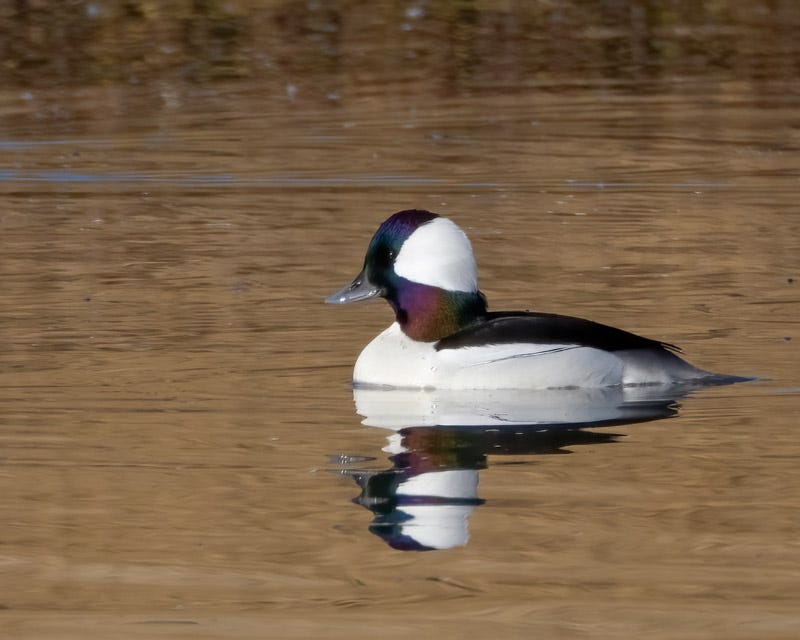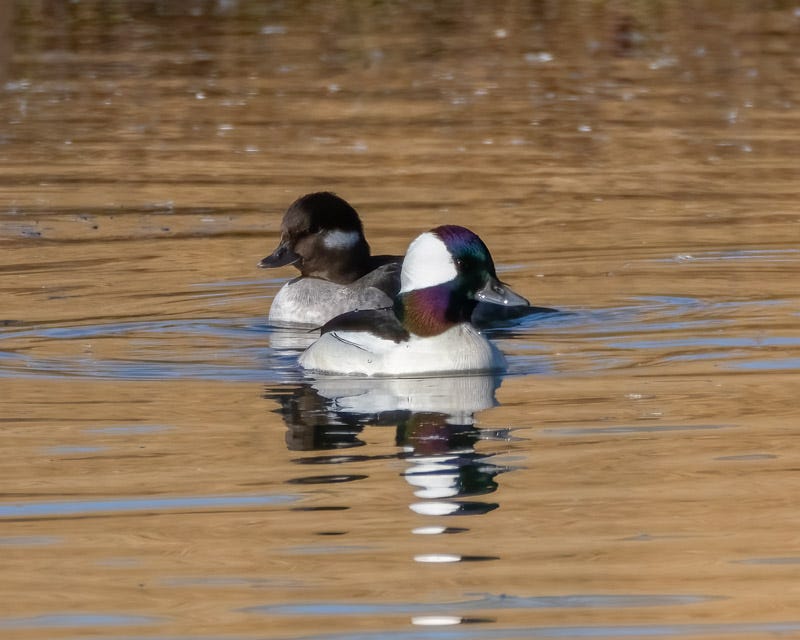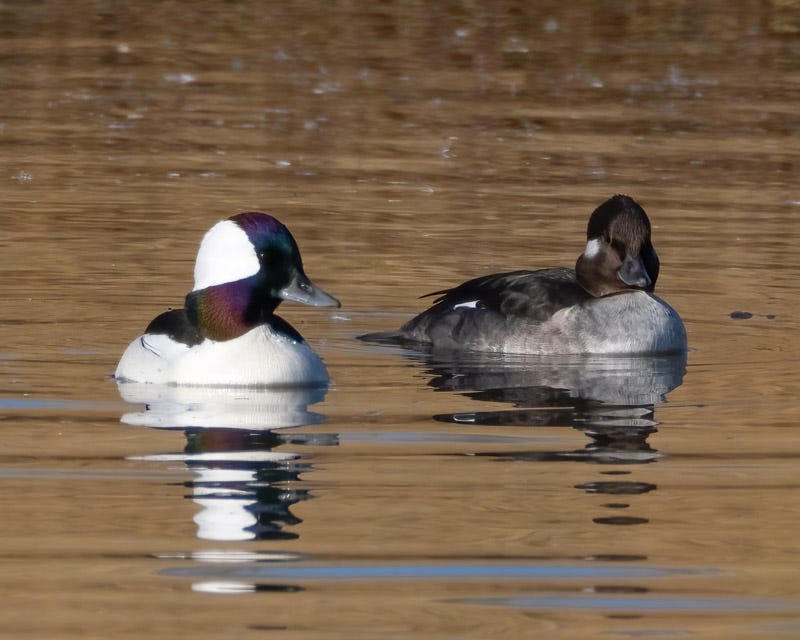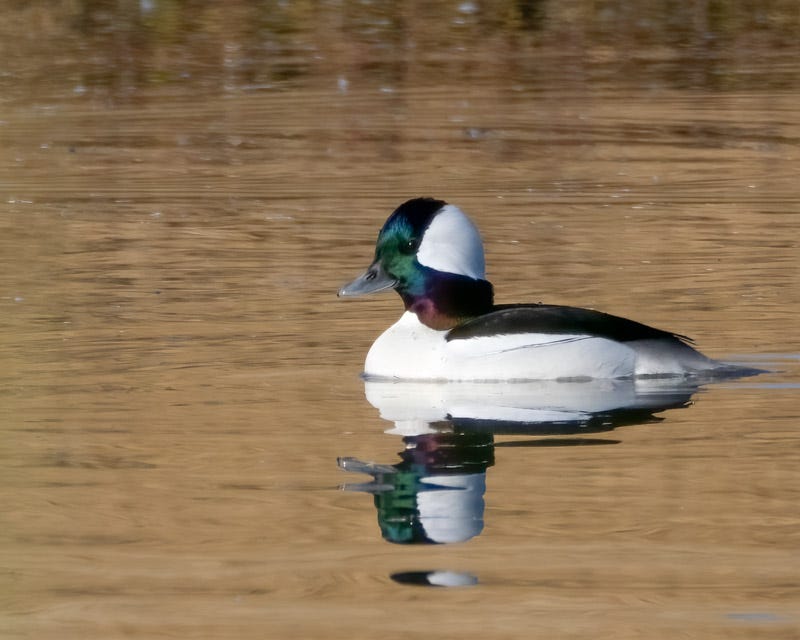Bufflehead Ducks
A very special "snowbird"
Perhaps my favorite of all the wintering ducks in Tucson is the Bufflehead. From a distance, the male Bufflehead looks snowy white set against dark black features. If you look a little more closely, the black becomes a variation of glossy iridescent green and purple. How did Buffleheads get their name? https://www.birdnote.org/podcasts/birdnote-daily/bufflehead-return
Look at how this little duck has traveled to get to Tucson. Buffleheads live year round in parts of western Montana, northern Idaho, isolated parts of Oregon and California. A large number of Bufflehead breed in central Canada and in Alaska before traveling south to their wintering grounds spread throughout much of North America. (map from https://www.allaboutbirds.org )
Unlike most ducks, Bufflehead are generally monogamous, remaining with the same mate for years.
Female Buffleheads are a gray/brown color with a white, oval cheek patch. Buffleheads are the smallest diving duck in North America.
During breeding season, Bufflehead nest in tree cavities, most of which were created by Northern Flickers (woodpeckers). As the range map above hints at, Bufflehead nest in cold northern country in what is called "boreal forest and aspen parkland." They winter in a wide variety of locations, both in fresh water and in the ocean. Birdnote shares a little of the winter life of Bufflehead ducks: https://www.birdnote.org/podcasts/birdnote-daily/buffleheads-winter
If you have noticed the iridescent colors of the head of the Bufflehead, look at the photo below. The dark feathers are pigmented black, but the feather structure breaks up light as it hits those feathers, causing the iridescence. All of a sudden, in differing light, the photo below reveals that the colors have changed from what they looked like moments before in the shot above..
Buffleheads are diving ducks. In freshwater ponds like the one this bird is wintering in, they will be eating damselfly and dragonfly larvae along with other invertebrates and perhaps even plant matter. When they are feeding, they can spend as much time underwater as they do above water. They repeatedly dive underwater for a dozen seconds or more, then surface for the same short time, before diving once more.
While on the water, they remain a strikingly beautiful bird that I've been fortunate to see every winter in Tucson.









Thanks so much for sharing the photos of these beautiful ducks! It's always such a joy to see them in their natural habitat. I remember the first time I spotted some Buffleheads about five years ago. It was during an afternoon stroll at a lovely park located just north of Atlanta. Watching them dive and then suddenly reappear a bit farther away was a delightful experience. Seeing your photos brought back those fond memories. I look forward to seeing more of your wonderful wildlife captures!
Gorgeous bird! I see them in Reed Park sometimes.
Thanks,